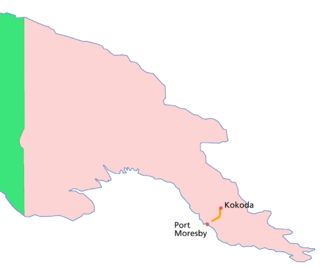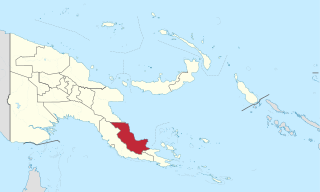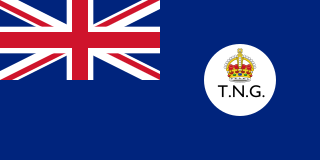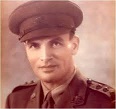
Lae is the capital of Morobe Province and is the second-largest city in Papua New Guinea. It is located near the delta of the Markham River and at the start of the Highlands Highway, which is the main land transport corridor between the Highlands region and the coast. Lae is the largest cargo port of the country and is the industrial hub of Papua New Guinea. The city is known as the Garden City and home of the University of Technology.

The Territory of Papua comprised the southeastern quarter of the island of New Guinea from 1883 to 1975. In 1883, the Government of Queensland annexed this territory for the British Empire. The United Kingdom Government refused to ratify the annexation but in 1884 a Protectorate was proclaimed over the territory, then called "British New Guinea". There is a certain ambiguity about the exact date on which the entire territory was annexed by the British. The Papua Act 1905 recites that this happened "on or about" 4 September 1888. On 18 March 1902, the Territory was placed under the authority of the Commonwealth of Australia. Resolutions of acceptance were passed by the Commonwealth Parliament, who accepted the territory under the name of Papua.

The Kokoda Track or Trail is a single-file foot thoroughfare that runs 96 kilometres (60 mi) overland – 60 kilometres (37 mi) in a straight line – through the Owen Stanley Range in Papua New Guinea. The track was the location of the 1942 World War II battle between Japanese and Allied – primarily Australian – forces in what was then the Australian territory of Papua.
Maroubra Force was the name given to the ad hoc Australian infantry force that defended Port Moresby, Papua New Guinea from the Japanese, and was involved in the Kokoda Track Campaign of the Pacific War, World War II. The force was established by the Allies under the codename "Maroubra", referring to the troops in the forward area, it was one of many units forming the body of the New Guinea Force, the main Allied army formation in the South West Pacific Area during 1942.

Kokoda is a station town in the Oro Province of Papua New Guinea. It is famous as the northern end of the Kokoda Track, site of the eponymous Kokoda Track campaign of World War II. In that campaign, it had strategic significance because it had the only airfield along the Track. In the decades preceding, it had been a foothills settlement near the gold fields.

Oro Province, formerly Northern Province, is a coastal province of Papua New Guinea. The provincial capital is Popondetta. The province covers 22,800 km2, and has 176,206 inhabitants. The province shares land borders with Morobe Province to the northwest, Central Province to the west and south, and Milne Bay Province to the southeast. The province is located within the Papuan Peninsula.

Fuzzy Wuzzy Angels was the name given by Australian soldiers to Papua New Guinean war carriers who, during World War II, were recruited to bring supplies up to the front and carry injured Australian troops down the Kokoda trail during the Kokoda Campaign. "Fuzzy-Wuzzy" was originally used by British soldiers in the 19th century as a name for Hadendoa warriors on the Red Sea coast of the Sudan, and referred to their elaborate butter-matted hairstyles.

The Territory of New Guinea was an Australian administered territory on the island of New Guinea from 1914 until 1975. In 1949, the Territory and the Territory of Papua were established in an administrative union by the name of the Territory of Papua and New Guinea. That administrative union was renamed as Papua New Guinea in 1971. Notwithstanding that it was part of an administrative union, the Territory of New Guinea at all times retained a distinct legal status and identity until the advent of the Independent State of Papua New Guinea.

The Territory of Papua and New Guinea was established by an administrative union between the Australian-administered territories of Papua and New Guinea in 1949. In December 1971, the name of the Territory changed to "Papua New Guinea" and in 1975 it became the Independent State of Papua New Guinea.

Sanchez William Genia, commonly referred to as Will Genia, is an Australian rugby union player, currently playing scrum-half for the Kintetsu Liners in Japan. He had previously played Super Rugby for the Queensland Reds (2007-2015) and Melbourne Rebels (2018-2019) and for Australia (2009-2019). He also had previously played for Stade Français in France's Top 14 Comp during 2015-2017.

New Guinea Force was a military command unit for Australian, United States and native troops from the Territories of Papua and New Guinea serving in the New Guinea campaign during World War II. Formed in April 1942, when the Australian First Army was formed from the Australian I Corps after it returned from the Middle East, it was responsible for planning and directing all operations within the territory up until October 1944. General Headquarters Southwest Pacific Area Operational Instruction No.7 of 25 May 1942, issued by Commander-Allied-Forces, General Douglas MacArthur, placed all Australian and US Army, Air Force and Navy Forces in the Port Moresby Area under the control of New Guinea Force. Over the course of its existence, New Guinea Force was commanded by some of the Australian Army's most notable commanders, including Sydney Rowell, Sir Edmund Herring and Sir Leslie Morshead.
Charlie John Stuart Lynn is a former Australian politician who served as a Liberal Party member of the New South Wales Legislative Council between 1995 and 2015.

Airlines PNG Flight 4684(CG4682/TOK4684) was a scheduled domestic passenger flight, operated by Papua New Guinean airliner Airlines PNG, flying from Jacksons International Airport in Papua New Guinea's capital Port Moresby to Kokoda Airport in Oro Province, Papua New Guinea. On 11 August 2009, the aircraft operating the flight, a de Havilland Canada Twin Otter, crashed into a forest in Kokoda Valley, a popular trekking site in Papua New Guinea while carrying 13 people in bad weather. A search and rescue operation was conducted by authorities and found the wreckage of the crashed plane on the next day, 12 August 2009. The aircraft was pulverized, and searchers found no signs of life. Papua New Guinean Search and Rescue Agency then announced that everyone on board was killed instantly in the crash.

Sohe District is a district of the Oro Province of Papua New Guinea. Its capital is Kokoda. The population was 86,547 at the 2011 census.

The Kokoda Track Memorial Walkway is a memorial walking track located in the suburb of Concord West, Sydney, New South Wales, Australia. It is located along the foreshore of shores of Brays Bay on the Parramatta River, and is a unique tribute to the Australian troops who fought in the World War II Papua-New Guinea campaign of July 1942 till January 1943.
The Kokoda Challenge is Australia’s premier cross country team event, a punishing 96 km of hills and bushwalking that takes place in the Gold Coast hinterland in July of each year.

Sogeri town is the headquarters of the Sogeri Sub-District of the Kairuku-Hiri District in the Central Province of Papua New Guinea. It is located in the mountains eastward from Port Moresby and is situated in the Sogeri Plateau at about 500m above sea level. It is connected to Port Moresby by Sogeri Road. The town is near the famous Kokoda Trail. Sogeri has a rural hospital, a police station, some stores and a supermarket. It also has a fruit and vegetable market. The town also has an Elementary School, a Primary School and two Secondary Schools. Sogeri is also home to a couple of parks, scenic sightseeing areas, beautiful picnic places and rivers. The Sogeri sub-district has five hotels. Sogeri Lodge, Kokoda Trail Hotel and Koitaki Country Club are situated in the Upper Sogeri area. Two others are situated at the Lower Sogeri area, which includes Bluff Inn.

The Kokoda Track Foundation (KTF) is an international aid organisation working in Papua New Guinea. The foundation was established in 2003 and supports the indigenous people of that country. The Foundation provides education, health, and community service programmes such as disaster relief, microbusiness promotion and sustainable ecotourism.

Charles Abel is a Papua New Guinean politician. He has been a member of the National Parliament of Papua New Guinea since August 2007, representing the electorate of Alotau Open. He was Minister for Finance and Rural Development in 2019.

Captain Herbert Thomson "Bert" Kienzle was an Australian soldier and plantation owner from the Territory of Papua. He is notable for his contribution as officer in charge of native labour supporting Australian forces fighting along the Kokoda Track. He identified and named the dry lake beds, Myola, that were to become an important supply dropping area and staging point during the Kokoda Track campaign. In later life, he was recognised for his contribution to the development of Papua New Guinea.













